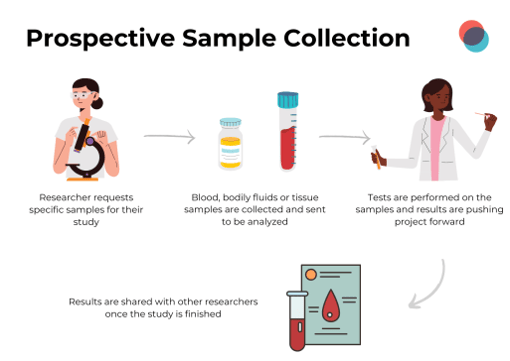Prospective Collection
April 26th, 2022, by Labtoo's team
There are two ways to get biological human samples: retrospective collections and prospective collections.
Prospective sample collection consists in recruiting patients with the same disease and collecting one or multiple types of biological samples. The samples can be blood, plasma, tissue, or bodily fluids. It is a long process that requires planning and regulatory authorizations.

A prospective study often starts with a specific research objective that requires data and/or samples collected from patients, that are not already available in biobanks. This means that patients who consent to give a biological sample are not necessarily doing it for medical reasons but may do it because they agree to give their sample to help research.
Patients for a prospective collection are selected regarding study-specific criteria (age, sex, disease) and the conditions of sampling are meticulously determined so that all patients’ samples are collected the same way.
The downside to this kind of collection is the fact that it may be a burden on patients to provide tissues or personal data, yet it is essential for research to make progress. Unavailability of a large number of samples in some cases, and the time and planning it takes to implement it also contribute to the difficulty to have a prospective study. But the main advantage is that the samples collected will be a close, if not perfect, match to what is needed to conduct the research project.
Data resulting from the prospective study will be used in the first place by the researchers who decided to conduct the study, but they can also be used by others for research on a related subject if authorized.
Lastly, prospective collections can also be conducted on long-term cohorts, or groups of patients selected for specific traits and monitored on long periods of time.